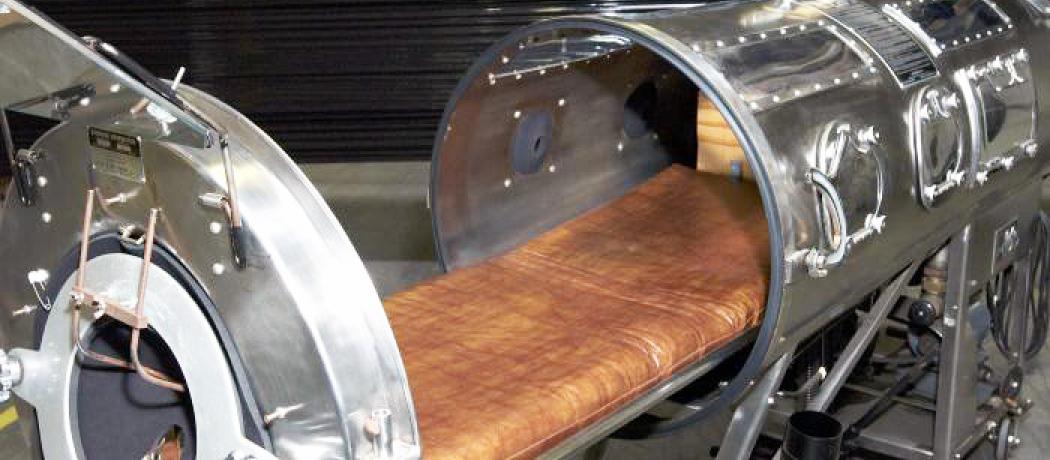The desperate requests for ventilators in today’s treatment of patients in the grasp of the novel coronavirus brought to mind my encounter with breathing machines in the early 1950s polio epidemic, when I signed up as a volunteer to manually pump iron lungs in case of power failure at Vancouver’s George Pearson Centre.
The Pearson Centre, a 264-bed building, was opened in 1952 as a tuberculosis hospital, but in the first 8 years its focus was on polio patients requiring respiratory assistance. Rows of the negative pressure ventilators, nicknamed iron lungs, were lined up on the main floor of the building. The Drinker respirators were 2-metre long cylindrical tanks enclosing the patient’s body—a bit like today’s MRI machines, but with the patient’s head resting outside the tank. A mirror attached above the head permitted some visual contact with the environment. The tanks had air-sealed portals with attached gloves to accommodate nurses’ and doctors’ arms access to the patient inside. The patient could be wheeled out of the machine for short periods as the bed could be moved on casters within the machine. The pumps or bellows raised and lowered the air pressure in the tank to induce breathing. The rib cage expanding, air flowed into the lungs; the rib cage collapsing, the reverse happening and the patient exhaled. Attending staff’s greatest worry was an electrical failure. The iron lungs were cumbersome in size and operation, but they supported patients for years.
Although I was never called to operate one of the machines in the 1950s, I did have an iron-lung related experience some 20 years later. I received a phone call from the nursing staff assigned to one of the still-functioning lungs at George Pearson Centre. A young man already confined to the machine for several years had been repeatedly asking the nurses and other female attendants about sexual matters and asked one of the staff members to stimulate him for a sexual release while he was having his peri-care. The nurses heard about my work in sexual rehabilitation and wondered if I would come talk to this young man. I knew about the necessary intimate nursing care for a patient in the iron lung, and I certainly understood how the patient’s insistence on a sexual dialogue could become annoying and interfere with his care. I also felt for the patient, confined as a bird in a cage.
A few days later I visited the institution and met with the staff. They explained the situation and when I revealed what my approach might be, they ensured me that they were open to my proposal. I had to learn a bit about the machine’s way of operating—how best I could take a history or converse with the patient while his breathing was forced. I was also concerned that the rhythmic breathing might be interfered with, considering what I had in mind.
To cut my story short, I was able to take a good history and after the young man gave me his consent, I put a small vibrator through one of the portholes, pushed my hands into the gloves to reach his body, and exposed him. When he was ready, I applied the vibrator. It took half a minute, then he let out a cry and, between puffs of air, he said, “thank you.”
I didn’t hear anything further from the nursing staff for about 6 months, until I received a thank-you note from them along with the sad news that their now well-behaving young patient had passed away peacefully.
—George Szasz, CM, MD
Suggested reading
Meyer JA. A practical mechanical respirator, 1929: The “iron lung.” Ann Thorac Surg 1990;50:490-493.
Wikipedia. Iron lung. Accessed 8 April 2020. https://en.wikipedia.org/wiki/iron_lung.
This post has not been peer reviewed by the BCMJ Editorial Board.

